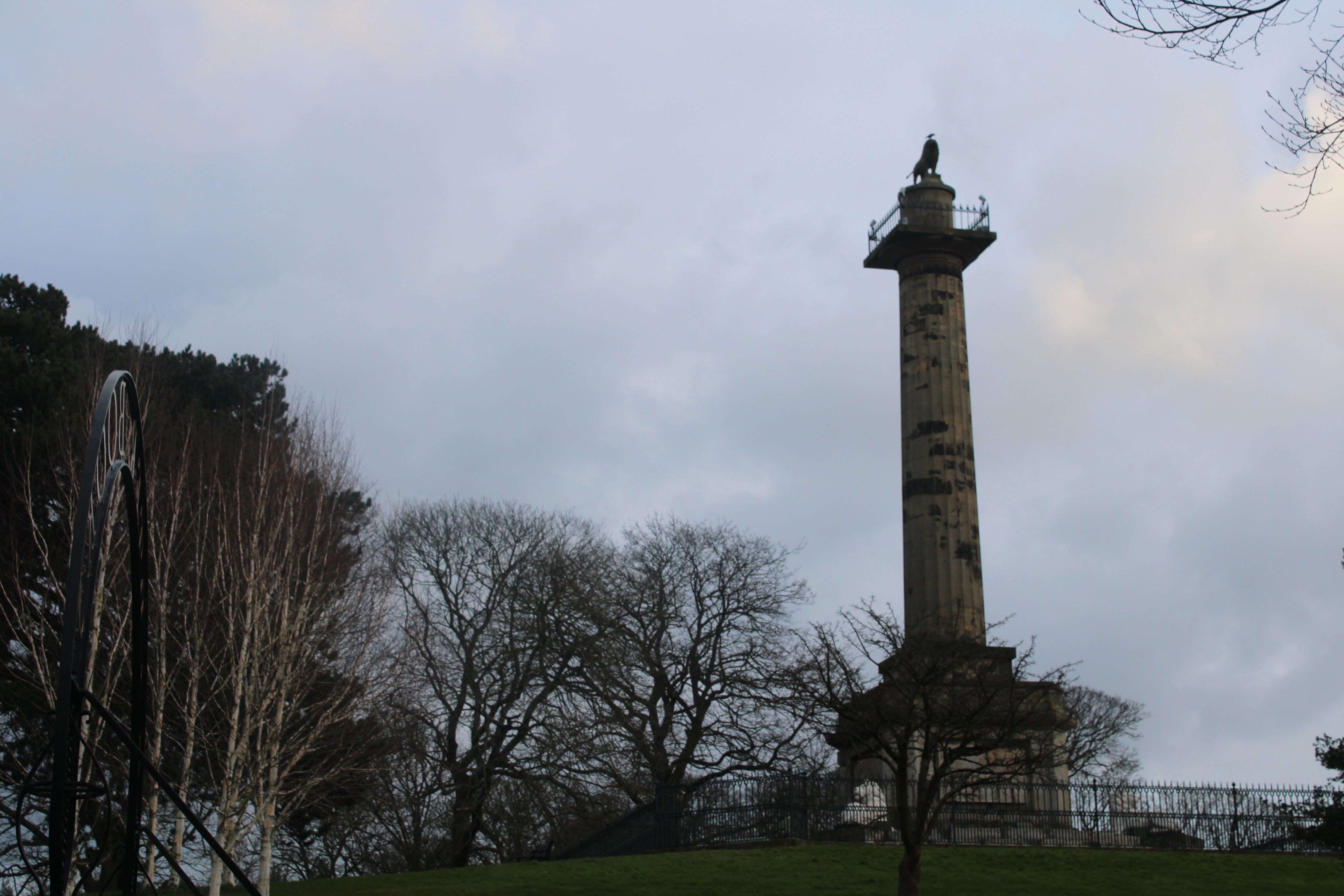
Alnwick
Percy Tenantry Column
Last Updated:
15 Feb 2025
Alnwick
This is a
Monument
55.410831, -1.699209
Founded in
Current status is
Extant
Designer (if known):

Listed Grade II
You know times have changed when tenants actively built a monument to their landlord 200 years ago!
This is the Percy Tenantry Column which sites adjacent to Alnwick Railway Station. It was a very different time in the early 19th century - the gentry and peasantry lived entirely separate lives and would only congregate in times of need or greed, for example for when tax increases were due!
The 2nd Duke of Northumberland, Hugh Percy, was a military man who retired to his seat in 1786 after fighting against France and the US. He was defined as philanthropic, candid and honourable by contemporaries and tailored a positive reputation with locals. This was only bolstered by the fact he would meet regularly, bi weekly in fact, with locals to hear their concerns and support them where required. Mind, he was still a Duke and did very Duke things like triple the rents when times were good because he knew farmers could afford it!
This was the case in the 1810s. Agriculture was booming as farmers were selling their goods to troops abroad, but this came tumbling down in peacetime when supply vast outweighed demand at the end of the war. Farmers were struggling to meet the rents set by the Duke. In a surprising turn of events, the Duke sympathised and realigned his expectations to support the farmers and reduced their payments to meet their suffering.
In admiration of his military service and empathy in their plight, the tenantry erected this column in 1816. The foundation ceremony involved a great procession of tenants bearing corn, wine & oil with the oldest bearing white wants in their hands and blue & yellow favours on their breast. A tube was placed into a cavity featuring the names of the late tenantry volunteers - his own corps, and their medals commemorating the day. A 21 gun salute took place and the procession returned to the Swan and the Town Hall where they dined in sing-song and fanfare.
The Duke passed a year later at Northumberland House in London, making this a fitting tribute for his fascinating life. It's said it also went on to inspire Nelson's Column in the capital.
Listing Description (if available)


Here, we see the tithe award of 1848 and the first Ordnance Survey published in the 1860s. The column was built right on the outskirts of the town at that stage, where the lanes north, east and south amalgamated onto Bondgate and the tower which allowed access within the original walled town. I imagine the site was gifted by the Duke to erect this monument.
You'll also notice a few others interesting tidbits. The Shilbottle waggonway can clearly be seen on the right of the map at the station site, with the coal depot allowing onwards transport of the mineral. The route of the waggonway is little known, though can be made out with some guesswork on the first Ordnance Survey map with the route now claimed by a country lane. This later became the site for Alnwick Station. The workhouse was also in operation after previously moving from the centre of the town.

The boundaries continued to expand into the 1890s, with a set of terraces being constructed south of the station - effectively a whole new district of Alnwick. The column became part of a public park, greeting travellers as they made their way from Alnmouth and the coast. At this time, a ticket had to be obtained to enter the column grounds.

The Tenantry Column in February 2025

A very early shot of the column and pinfold from Green Bat around the 1860s. Unknown photographer.

A postcard of the war memorial and monument in the 60s or 70s. Unknown original source.
